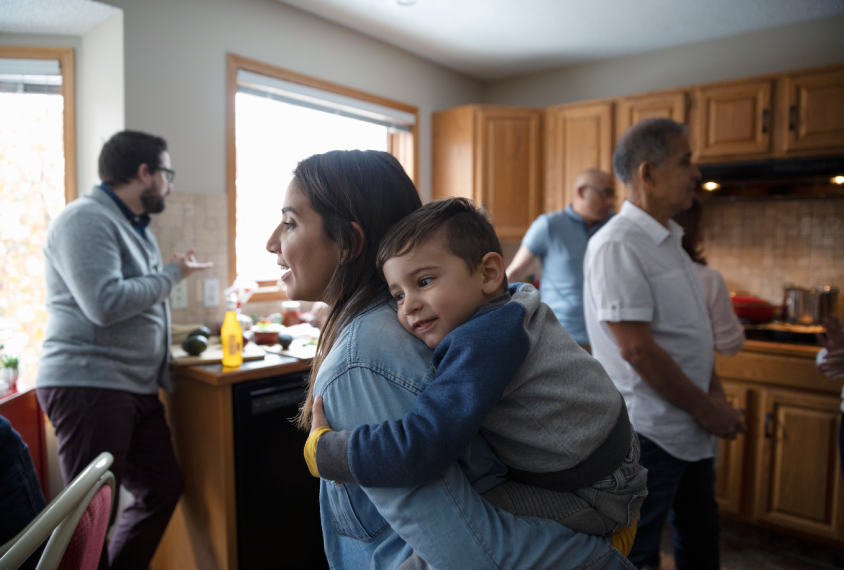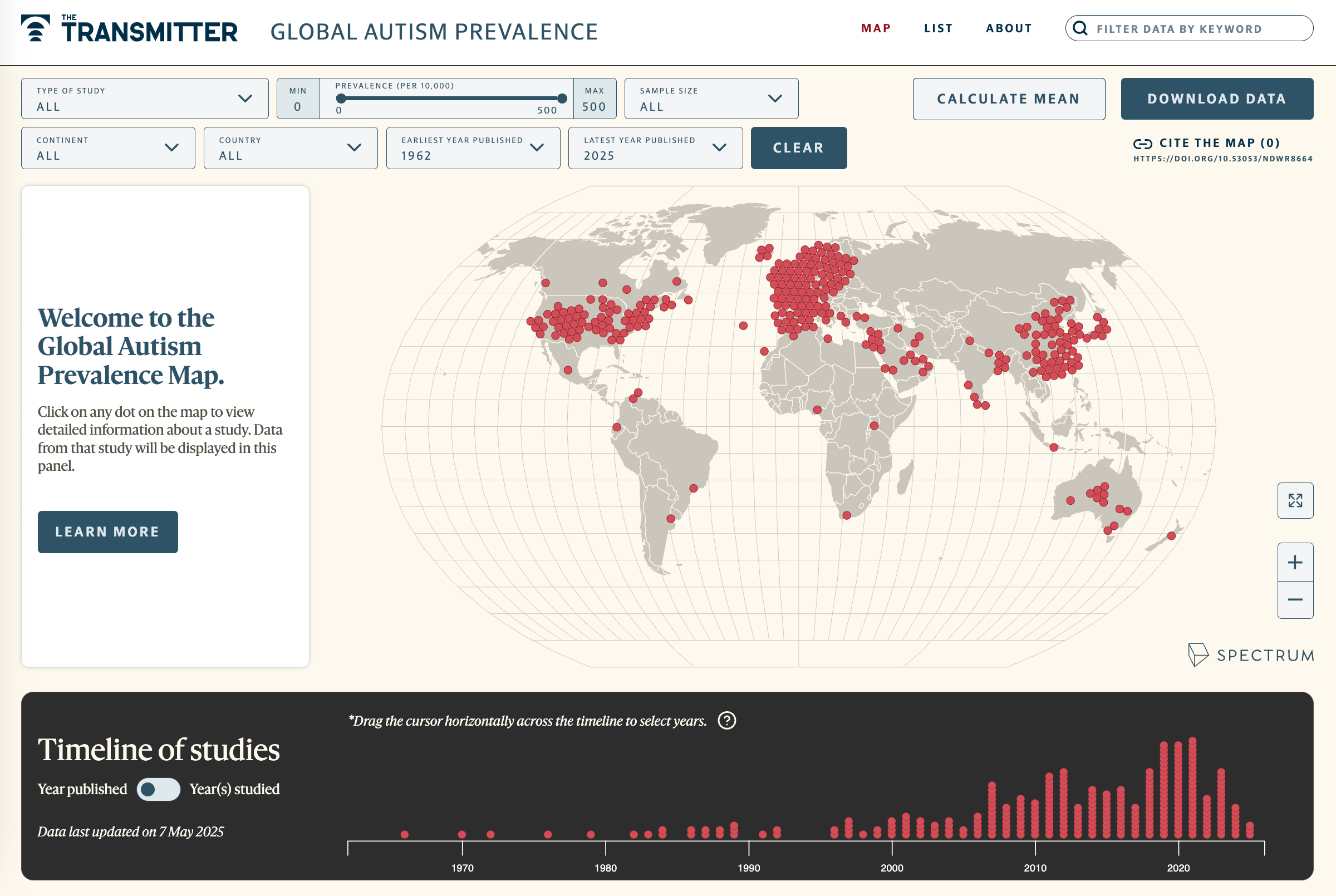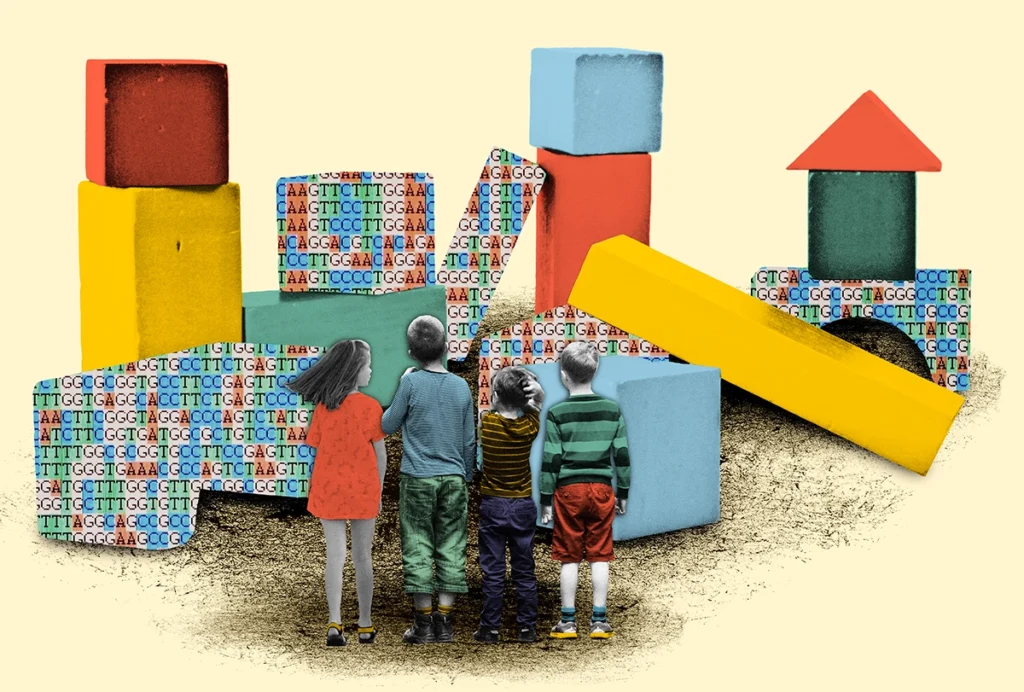
Majority of autism risk resides in genes, multinational study suggests
About 81 percent of autism risk comes from inherited genetic factors, according to an analysis of more than 2 million children from five countries.
About 81 percent of autism risk comes from inherited genetic factors, according to an analysis of more than 2 million children from five countries, published today in JAMA Psychiatry1.
The study is the largest yet to estimate the heritability of autism risk in a multinational population. The findings are consistent with results from a large 2017 study of twin and non-twin sibling pairs in Sweden that suggested about 83 percent of autism risk is inherited2. A third study — also in Sweden and also in twins — reported in 2010 that these factors contribute to about 80 percent of autism risk3.
The new study improves upon the previous work by analyzing multiple generations of families from several countries.
“It’s a huge study, and it’s reflecting the kind of diagnostic culture of multiple independent countries,” says study researcher Joseph Buxbaum, professor of psychiatry at the Icahn School of Medicine at Mount Sinai in New York. “This is the best estimate we’re likely to see in the near future.”
The researchers also examined other factors tied to autism. For instance, an estimated 18.1 percent of autism risk arises from environmental factors that are not shared among family members. This includes noninherited, or de novo, mutations, Buxbaum says. The team also looked at factors that are shared among family members, such as the home environment, but found that they generally do not contribute to autism risk.
The analysis also shows that certain chronic conditions do not independently confer risk for autism via the mother’s genes.
However, the researchers did not account for illnesses such as fever during pregnancy, says Brian Lee, associate professor of epidemiology and biostatistics at Drexel University in Philadelphia, Pennsylvania, who was not involved in the work. Studies have identified close links between autism and several maternal factors, such as infection during pregnancy.
The algorithms the researchers used to estimate risk also overlook other factors tied to autism risk, Lee says, including gene-environment interactions and changes to gene expression via chemical modifications of DNA.
“The [algorithms] are the best available models that we have, but they are fairly crude,” he says. “There are a lot of things going on [in autism] that this particular study design can’t assess.”
Family ties:
The researchers combed through national health registries for data on children born in Denmark, Finland, Sweden and Western Australia from 1998 to 2007. They also looked at national health records for about 130,000 children born in Israel from 2000 to 2011.
In all, the sample includes 2,001,631 children, including 22,156 diagnosed with autism. The majority of the children live in Denmark, Finland or Sweden; the researchers included these children in the main analysis and analyzed those from Western Australia and Israel separately.
They also looked for records of autism diagnoses among the autistic children’s siblings, half-siblings and cousins. And they used the same databases to identify the children’s parents and grandparents and build family trees.
Several previous studies estimated autism’s heritability by analyzing twins, but those studies may be limited by factors specific to twins, such as their increased likelihood of being born premature. The new study benefits from the fact that it includes non-twin siblings and cousins, says Jeremy Veenstra-VanderWeele, professor of psychiatry at Columbia University, who was not involved in the research.
The researchers used a statistical model and estimated that about 81 percent of autism risk stems from genes children inherit from their parents. The estimate has a small range of uncertainty, meaning it is more reliable than previous estimates, Veenstra-VanderWeele says.
Regional division:
The heritability estimates vary by country, however. For instance, the estimate for Finland pegs the number at 51 percent of autism risk, with shared and nonshared environmental factors contributing 14 percent and 34 percent of autism risk, respectively. And the range around these estimates is wide.
Likewise, the estimate for heritability from the Western Australia data is 54 percent, and again the range for this estimate is wide. These discrepancies may stem from the fact that the number of autistic participants in the study is small, or they may generally reflect differences among countries’ diagnostic standards for autism, the researchers say.
“Is that just noise in the system, or is it that there’s something really different about how autism is diagnosed in those countries? That’s an interesting question,” Buxbaum says.
To address the impact of autism prevalence on heritability estimates, the researchers substituted Sweden’s autism prevalence (1.4 percent) with Finland’s (0.6 percent). The swap brings Sweden’s heritability estimate down from 81.1 percent to 62 percent, suggesting that diagnostic differences among countries have a big impact on the heritability estimates.
Differences in population genetics between Finland and other European countries may also explain why the genetic contribution to autism is smaller in Finland than in the other countries.
Lee says these explanations are valid but that he’s “not entirely comfortable with the way [the researchers] waved away Finland’s results.”
Even so, the primary findings are consistent across the three other countries — “a real strength of the paper,” says Tychele Turner, senior research fellow in Evan Eichler’s lab at the University of Washington in Seattle.
“It’s always good when you have a finding in one cohort,” Turner says. “But you feel much stronger about it when you see that replicated in multiple different cohorts.”
References:
Corrections
A previous version of this article incorrectly stated that certain chronic conditions in women do not confer autism risk to their children. The story has been updated to reflect the fact that chronic conditions do not confer risk for autism via the mother’s genes.
Visit our Global Autism Prevalence Map

Explore more >
Recommended reading

New organoid atlas unveils four neurodevelopmental signatures

Glutamate receptors, mRNA transcripts and SYNGAP1; and more

Among brain changes studied in autism, spotlight shifts to subcortex
Explore more from The Transmitter

Anti-seizure medications in pregnancy; TBR1 gene; microglia

Autism prevalence increasing in children, adults, according to electronic medical records
